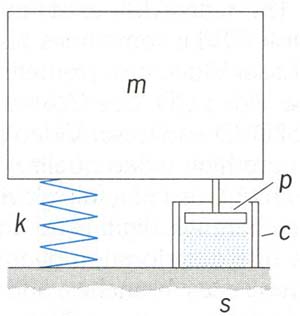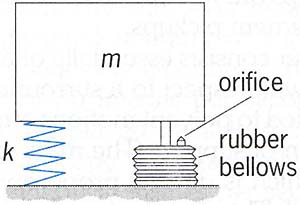AMAZON multi-meters discounts AMAZON oscilloscope discounts
The processes and techniques used for converting the mechanical vibrational energy of solids into heat energy. While vibration damping is helpful under conditions of resonance, it may be detrimental in many instances to a system at frequencies above the resonant point. This is due to the fact that the relative motion between the base of the vibration isolator and the mounted body tends to become smaller as the isolator becomes more efficient at the higher frequencies. With damping present, the force transmitted by the elastic element is unable to overcome the damping force; this leads to a resulting increase in transmissibility.
All metal springs which include structural members such as brackets and shelves have some damping. But, such damping is insufficient for vibration isolators and must be augmented by special damping devices.
Several different types of damping devices have been developed and used successfully. Probably the most familiar is that used on automobiles, which, although known as a shock absorber, is in reality a damper, and functions as a limiter to the spring system of spring constant k. The system is shown in Fig. 1. A piston p is attached to the body m and is arranged to move vertically through the liquid in a cylinder c which is secured to the support s. As the piston moves, the force required to cause the liquid to flow from one side of the piston to the other is approximately proportional to the velocity of the piston in the cylinder. This type of damping is known as viscous damping. The damping force is controlled by the viscosity of the liquid and by the size of the orifice in the piston.

Fig. 1. Automobile shock absorber.
Some of the disadvantages of viscous damping may be overcome by using air instead of liquid as the damping medium. Air, being compressible, will add to the effective spring force with large displacements. If the air is housed within a flexible bellows, damping will be attainable horizontally as well as vertically. Such a system is illustrated in Fig. 2. This type of damping has proved very effective in vibration isolators.

Fig. 2. System employing viscous damping with air.
Damping forces may be generated by causing one dry member to slide on another. This is known as dry friction or coulomb damping. Friction damping is used in several commercially available isolators because it provides a simple means to control the damping forces.
Magnetic damping is attainable as a result of the electric current induced in a conductor moving through a magnetic field. The damping force can be made proportional to the velocity of the conductor moving through the field.